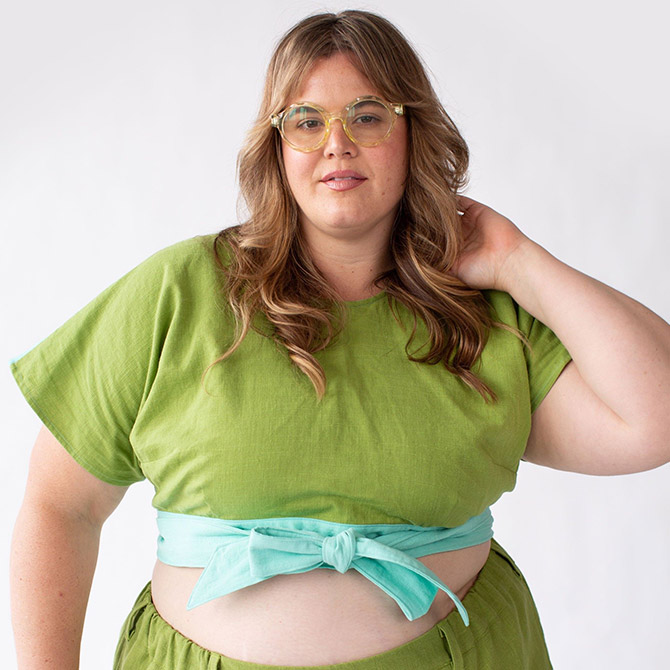“Inclusivity” and “diversity” are big buzzwords these days. On the one hand, it’s worth celebrating because the needs of many others are acknowledged and finally met. On the other, some businesses see it more as a bandwagon of trends to jump into, without fully committing to what it means and doing the necessary to follow through. In short, it’s done without seeing these consumers as real people with real needs and desires.
Plus-size fashion is a great example of this. While the gap is smaller than before, there are still plenty of misconceptions surrounding its representation.
Plus-size fashion means offering a couple more sizes
What some fast fashion brands are getting wrong about catering to curvier people is the notion that they can just add a couple more ‘X’s to the ‘L’. Traditionally, clothes are designed for a specific size. They are then scaled up and down for larger and smaller sizes to fit the range. However, simply scaling it for plus-size would result in unflattering fits.
“Historically, it’s common for plus-size garments to have sleeves that are too long, arm openings that gape, and many other fit problems because the human body doesn’t scale the way designs do,” Nadia Boujarwah, co-founder of plus-size company Dia & Co., tells Forbes.
View this post on Instagram
Instead, the right way to approach it is to create a new design following a new model to ensure the fit is proportionate to the body. This is bra company SheFit’s successful strategy—their designs are never extended beyond three sizes at a time—and it’s working since its revenues doubles every year.
However, not every brand does this because it means more costs. But the truth is, size-inclusivity means taking different shapes into consideration too.
The connection between plus-size fashion and sustainability
Some of you might wonder how the two are co-related, and that’s where the problem begins. For some reason, plus-size fashion is being treated as a niche trend than an everyday need that’s here to stay. There’s a rise of more eco-conscious brands, designs and even materials. But, for those that create them direct-to-consumer, its range of sizes is sorely limited.
View this post on Instagram
“I was the fat girl emailing designers to ask them why their sizing all stopped at an XXL when they insisted their sustainably designed garments were here to save the planet. I wanted to save the planet too. I wanted to wear clothing that was consciously made. I wanted to stare blankly at an empty wall knowing deep in my heart how effortlessly cool I looked,” says Marielle Elizabeth TerHart, a slow fashion advocate for the plus-size community.
Designers and brands are growing increasingly aware of how they can contribute to the sustainability movement. We, as consumers, too, are confronted with our role—how can we minimise our environmental footprint by making conscious choices of where and what we buy.
Some smaller brands opt for made-to-order systems to reduce waste while inherently enjoying an economic benefit. The flip side of this is that it hikes up the prices of the products since each piece is approached with more time, attention and detail. It may be seen as a luxury to purchase from these sustainable brands. But there is a demand. The problem is that it’s a bit more exclusive than you might expect.





Most brands still exclude plus-size options despite all these steps that have been taken to be more green. For example, according to the International Journal of Fashion Design, Technology and Education, most sustainable products available in the US are only offered between sizes 0-8.
Elizabeth laments that with the lack of options for the plus-size community, people have thus often found themselves reverting to fast fashion or dedicated plus-size brands. The other problem with the latter is that they tend not to be environmentally conscious or reflect their true fashion style.
This lack of inclusivity is why some people cannot partake in sustainable fashion and unwillingly feed the fast fashion industry. This very notion has also been supported by a 2019 Sourcing Journal survey, which found that plus-size women spend just 83 cents on the dollar compared to straight-size shoppers.
View this post on Instagram
Then, there’s the undeniable fact that the environmental footprint of fast fashion is a massive cause for concern. It’s not just because it accounts for nine per cent of all microplastics in the ocean. Or that it utilises approximately 2,000 to 7,000 gallons of water for one pair of jeans and produces between two to eight per cent of global carbon emissions. Or the issue of employing sweatshop workers at meagre pay and dangerous work environments. Online shopping is on the rise due to the pandemic, so when the size doesn’t fit right, the customer will send it back for return, thus increasing the carbon footprint. The list goes on.
The problem with plus-size fashion designs
Wear darker colours. Go for looser tops, bottoms, or dresses. These were common fashion tips given to people with bigger silhouettes over the years. But, unfortunately, it’s ill advice to offer in this era while still promoting body positivity. If that’s what you love, that’s awesome. But it shouldn’t be restrictive. Fashion is meant to be
| SHARE THE STORY | |
| Explore More |




